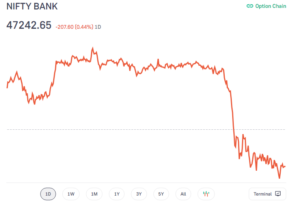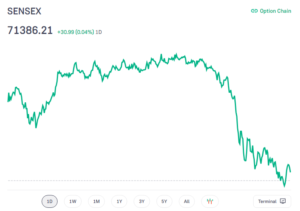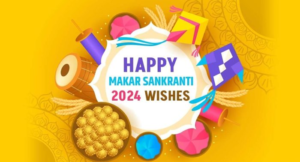
Britain’s Queen becomes the world’s second-longest reigning monarch
Britain’s Queen Elizabeth II overtook Thailand’s King to become the world’s second-longest reigning monarch in history, after France’s Louis XIV. The UK has been celebrating the 96-year-old Queen’s Platinum Jubilee to mark 70 years of service to the nation with grand events. After four days of royal parades, street parties, pageantry and other events held across the UK and the Commonwealth to mark the Platinum Jubilee milestone.
Crowned in 1953, Queen Elizabeth II became the longest-serving British monarch in September 2015, surpassing her great-great grandmother Queen Victoria. Now she has overtaken Thailand’s King Bhumibol Adulyadej, who reigned for 70 years and 126 days between 1927 and 2016, to set another record. Louis XIV of France remains the longest-reigning monarch, with a 72-year and 110-day reign from 1643 until 1715.
Important takeaways for all competitive exams:
- United Kingdom Capital: London
- United Kingdom Prime minister: Boris Johnson
- United Kingdom Currency: Pound sterling
R Praggnanandhaa won Norway Chess Group A open chess tournament
Young Indian Grandmaster, R. Praggnanandhaa emerged winner in the Norway Chess Group A open chess tournament here with 7.5 points from nine rounds. The 16-year-old GM, the top-seed, was in fine form and remained unbeaten through the nine rounds. He finished the tournament with a win over fellow Indian V Praneeth, an International Master. Praggnanandhaa finished a full point ahead of second-placed IM Marsel Efroimski(Israel) and IM Jung Min Seo (Sweden).
The Indian teenaged star has been putting in impressive performances in recent times and had beaten world number one Magnus Carlsen for a second time in the Chessable Master online event and lost a close final to China’s Ding Liren. Praggnanandhaa’s coach R. B. Ramesh congratulated him after the win and said it will help boost his confidence.
R Subramaniakumar appointed as MD & CEO of RBL Bank
Reserve Bank of India (RBI) has appointed R Subramaniakumar as the MD & CEO of RBL Bank. He has been appointed at RBL for three years from the date of taking charge. He is a former managing director and chief executive director of state-run Indian Overseas Bank. He was appointed the administrator of Dewan Housing Finance Co Ltd after the mortgage financier’s board was superseded.
About the R Subramaniakumar:
- Subramaniakumar’s tenure will begin from the date of his taking charge, under Section 35B of the Banking Regulation Act 1949.
- Subramaniakumar’s appointment came nearly six months after RBL Bank’s long-term MD and CEO Vishwavir Ahuja had stepped down In December 2021.
- Subramaniakumar’s appointment as the RBL Bank chief comes in the backdrop of the bank reporting a net loss of Rs 74.74 crore in FY2022, as against a profit of Rs 50.77 crore in FY2021.
- The RBL bank had also reportedly come under regulatory lens, with the RBI, in December 2021, appointing its chief general manager Yogesh K Dayal as an additional director of the private lender for two years.
Important takeaways for all competitive exams:
- RBL Bank Headquarters: Mumbai;
- RBL Bank Founded: August 1943.
Prithviraj Chauhan: History and Wars led by Prithviraj Chauhan
Prithviraj Chauhan: About
Prithviraj Chauhan was a king from the Chauhan dynasty and was also known as Rai Pithora. He ruled over Sapadalaksha, with his capital at Ajmer (at present-day Rajasthan). He took over the kingdom at a young age and his kingdom stretched from Thanesar in the North to Jahazpur in the south. In 1192 CE, the alliance led by Prithviraj Chauhan included several Rajput Kings and it defeated the Ghurid army which was led by Muhammad Ghori in Taraori. On the same battlefield in 1192 CE, Ghori came back with Turkish mounted archers and defeated the Rajput army. Prithviraj Chauhan fled away from the battlefield but was captured near Sirsa. The defeat of Prithviraj Chauhan at Tarain is considered a landmark in the history of the Islamic conquest of India.
Prithviraj Chauhan was born to the King of Chahamana king Someshvara and The queen Karpuadevi, who was a princess of Kalachuri. Gujarat was the birthplace of both Prithviraj and his younger brother Hariraja. Prithviraj Chauhan was born on the 12th day of Jyeshtha month according to the Prithviraj Vijaya. The Prithviraj Vijaya is the only surviving literary work from the reign of Prithviraj Chauhan. Prithviraj Vijaya does not specify any particular year of birth but says that the planetary alignment on the day Prithviraj Chauhan was born was auspicious.
Prithviraj Chauhan in Power
When his father Someshvara was crowned as the king of Chahamana, after the death of Prithviraj II, Prithviraj Chauhan moved from Gujarat to Ajmer. His father died when he was just 11 years old, and Someshvara dies in the year 1177 CE. It is found in the scripts that Prithviraj Chauhan took the power as a minor to take care of the kingdom with his mother as a regent. There are also a few doubtful debates on this, as the Hammira Mahakavya claims that Someshvara himself appointed Prithviraj Chauhan as the king and left the kingdom and went towards the forest.
The chief minister of the kingdom was Kadambavasam he served as the chief minister, administrator, and solider with complete devotion towards the young king. It is said that during the early years of Prithviraj Chauhan’s reign, all the military victories were his responsibility.
First military Victory
Nagarjuna was Prithviraj Chauhan’s uncle’s son. The rivalry between him and Nagarjuna started because of the Chahamana throne. Nagarjuna occupied the fort of Gudapura by rebelling against Prithviraj’s authority. Prithviraj surrounded the fort with his huge army of infantry, camels, elephants, and horses. Nagarjuna fled away from the fort and Prithviraj successfully captured the fort back. A garland made of the heads of the defeated soldiers was hanged in the Ajmer gate, according to Prithviraj Vijaya.
Prithviraj and war with Ghurids
Throughout the rule of Prithviraj, there were many raids from the Muslim dynasties. By the 12th century, the north-western areas of the Indian subcontinent were captured by them. The west Chahamana kingdom was controlled by the Ghazna-based Ghurid dynasty, by the end of the 12th century. In 1175 CE, on one hand, Muhammad of Ghor, the Ghurid ruler, crossed the Indus river and captured Multan, whereas, on the other hand, Prithviraj Chauhan was still a minor. By 1178 CE, he invaded Gujarat, which was under the leadership of Chalukyas (Solankis). On the way to Gujarat, the Ghurid army spread destruction, which includes demolishing temples and sacking Bhati-ruled Lodhruva. On the way, they also surrounded the Naddula fort which was controlled by the Chahamanas of Naddula. The Chalukyas of Gujarat defeated the Ghurid army and the Chahamanas did not face the invasion of Ghurids immediately. Over the next few years, Muhammad of Ghor shifted his base from Ghazna to Punjab by defeating Peshawar, Sindh, and Punjab. He made attempts to expand his empire which led to the conflict between him and Prithviraj Chauhan.
It is said that Muhammad of Ghor sent an official from his clan to Prithviraj Chauhan and asked him to abandon belligerence and pursue the path of rectitude. Prithviraj denied the demands of Muhammad of Ghor and this resulted between Prithviraj Chauhan and Muhammad of Ghor. The history of this war is divided into two parts, the First Battle of Tarain and the second battle of Tarain. There are several claims over these two wars, before Muhammad of Ghor defeated Prithviraj Chauhan, Prithviraj already defeated him several times.
Ather Energy partners SBI for customer retail finance
Electric two-wheeler manufacturer Ather Energy has partnered State Bank of India to provide customers with vehicle financing. As part of the association Ather Energy customers will get instant loans at interest rates as low as 9.55 percent per annum. Pre-approved loans will also be administered, depending on the buyer’s creditworthiness. SBI will offer the vehicle loans on their YONO mobile application as well as at their branch network, as the public sector lender ensures ease of adoption for the buyers.
With this collaboration, the original equipment manufacturer (OEM) aims to accelerate the growth of the electric vehicle (EV) ecosystem in the country. The customers, depending on their profiles, will be eligible to avail loans up to 85 percent of the on-road prices of the electric two-wheelers. The approved loan amount will be credited directly to the dealer’s account. Customers can avail the loan through YONO at an EMI of as low as Rs 251 per Rs 10,000 under SBI Easy Ride loan.
Important takeaways for all competitive exams:
- Ather Energy Owner: Hero MotoCorp;
- Ather Energy Headquarters location: Bengaluru;
- Ather Energy Founders: Tarun Mehta, Swapnil Jain.
Tencent bought stake in Flipkart worth Rs 2,060 crore
Chinese technology conglomerate Tencent has bought stake worth USD 264 million (about Rs 2,060 crore) in Flipkart from its co-founder Binny Bansal through its European subsidiary, according to official documents. Singapore-headquartered e-commerce firm Flipkart has operations in India only. Bansal holds around 1.84 per cent stake in Flipkart after selling part of his stake to Tencent Cloud Europe BV.
Post the transaction, Tencent arm holds 0.72 per stake in Flipkart which is valued at around USD 264 million, as per last valuation of USD 37.6 billion disclosed by the e-commerce firm in July 2021. The company’s valuation surged to USD 37.6 billion after raising USD 3.6 billion (about ₹26,805.6 crore) in funding round led by Singapore’s sovereign wealth fund GIC, CPP Investments, SoftBank Vision Fund 2 and Walmart.
Important takeaways for all competitive exams:
- Tencent Founded: 11 November 1998;
- Tencent Headquarters: Shenzhen, Guangdong, China;
- Tencent Chairman, CEO: Pony Ma;
- Tencent President: Martin Lau.
Nirmala Sitharaman inaugurated National Museum of Customs and GST in Goa
Union Finance Minister, Nirmala Sitharaman has inaugurated the National Museum of Customs and GST “Dharohar” in Goa as part of the Azadi Ka Amrit Mahotsav Iconic week of the Ministry of Finance, being celebrated from June 6 to 12. The two-storey ‘Blue building’, which was earlier known as Alfandega, during the period of Portuguese rule in Goa, has been standing on the banks of the Mandovi River in Panaji for more than 400 years.
About Dharohar:
- Dharohar is one of its kind museum in the country that showcases not only the artefacts seized by Indian Customs but also depicts various aspects of work performed by the Customs Department while safeguarding the economic frontiers of the country, its heritage, flora & fauna and the society.
- Dharohar has 8 galleries viz: Introductory gallery, History of Taxation Gallery, Guardians of our economic frontiers gallery, Guardians of our Art & Heritage, Guardians of Flora & Fauna, Custodians of our social well being, Journey of Indirect taxes -Salt Tax to GST and the GST gallery.
- The Museum provides the rare opportunity of having a peep into the working of the Department over the years ushering in change in its methodologies to meet the emanating challenges while at the same time providing yeomen service to the Nation.
Important takeaways for all competitive exams:
- Goa Capital: Panaji;
- Goa CM: Pramod Sawant;
- Goa Governor: S. Sreedharan Pillai.
10 Women Freedom Fighters who Created History in India
Women Freedom Fighters of India
Women in India have always been inspiring, whether it is now or during the times of the Indian freedom struggle. Women have always been a source of power and ideal of courage for society. There were several prominent faces in the Indian Freedom Struggle, and the role of women brought a significant change. Here, in this article, we are going to discuss 10 such women freedom fighters who fought courageously against all odds and embedded their names with golden words in the history of the Indian Freedom Movement.
- Rani Lakshmi Bai-
- Rani Lakshmi bai was also known as Jhansi ki Rani. She was one of the greatest and first women to fight for the freedom of India. She single-handedly fought with the British army without any fear in her eyes.
- At a young age, she was married to Raja Gangadhar Rao, who was the king of Jhansi. They both adopted a son, but after the tragic demise of Gangadhar Rao, the British government didn’t allow her to make her son the king of Jhansi as he was an adopted child.
- Along with the consequences, the British took over Jhansi under its control. Rani Lakshmi bai did not accept this kind of rule against her and her son. She took the armies and revolted against the British government.
- She fought against all odds and during her last time, she tied her son around her chest and fought against the Britishers. The Britishers tried their best but couldn’t catch Jhansi ki, Rani, at the end.
- When she got no way further, she set herself on fire and took her own life. The fire of courage and bravery was enough to make her name into golden history.
2. Sarojini Naidu-
- She is known as the Nightingale of India. She was one of the most impactful and prominent women freedom fighters who fought against the British government.
- She was an independent poet and activist. She played a very significant role in the Civil disobedience movement and the Quit India movement, for which she was even jailed.
- She traveled to several cities and delivered lectures about women’s empowerment, social welfare, and the importance of freedom.
- Sarojini Naidu was the first woman to become the governor of an Indian state and the second woman to become the president of the Indian National Congress.
- Though she died due to a heart attack in 1949, her contribution to the freedom struggle of India will always be remembered.
3. Begum Hazrat Mahal-
- She was one of the most iconic women freedom fighters in India and was also known as a counterpart of Jhansi Ki Rani Lakshmi Bai. In 1857, when the revolt started, she was one of the first freedom fighters who persuaded the rural people to fight and raise their voices against British rule.
- She announced her son as the king of Oudh and took over the control of Lucknow. This was not an easy war, the British government took over the control of Lucknow from the king and she was forced to retreat to Nepal.
4. Kittur Rani Chennamma-
- She was a prominent figure in the Independence of India but we hardly know her name. She was among the few and earliest Indian rulers who fought against the British government for the freedom of India.
- She has to take responsibility for her Kingdom after the death of her son and husband. She fought against the British and tried to save her kingdom.
- She led an army and fought courageously on the battlefield. Unfortunately, Kittur Rani Chennamma died on the battlefield.
- The light of her courage is still known in the country and she is remembered as the bravest woman in Karnataka.
5. Aruna Asaf Ali-
- She played a major role in the Salt Satyagraha. She was even jailed due to her participation in the Salt Satyagraha against the British government.
- When she was released from jail, she led the Quit India Movement, this shows how fearless the women were during the freedom struggle of India.
- She also fought for the rights of political prisoners in Tihar jail. For this, she launched a hunger strike which led to improvisation in the conditions of the prisoners.
- She was a courageous woman, and she broke all the stereotypes. She married a Muslim man, even though she was a Brahmo. Her family was against her decision but she knew what was right for her and what was right to set an example for society.
6. Savitribai Phule-
- She was the first female teacher in India and was the founder of the first Indian girl’s school. Her wise words “If you educate a boy, you educate an individual but if you educate a girl, you educate the whole family.”
- These few words sum up what ideology she followed. She was supported by her husband Jyotirao Phule, throughout her journey.
- They both fought against all the stereotypes and made people aware of women’s empowerment in society. She was determined to educate the girls of society and throughout the world, she is known for her courageous literary works.
- Today, all the credit goes to Savitribai Phule for starting this notion and letting a girl know her true powers with the help of education.
7. Usha Mehta-
- She was one of the youngest participants of the freedom struggle in the Indian freedom movement. Gandhi had a great impact on Usha, she was five when she five met Gandhi.
- She was only eight-year when she participated in the ‘Simon go back’ protest. Her father was a judge working under the British government, he tried to persuade her against Gandhi but she knew her father was a mere employee of the British government and was scared of her getting hurt in this freedom struggle, but she decided to fight courageously against the British government.
- She wanted to be part of the freedom struggle not in a significant way but wanted to contribute as much as she can. She dedicated herself completely to the freedom struggle after quitting her studies.
- She was even jailed for running the radio channels which were against the British government.
8. Bhikaji Cama-
- She was one of the leading freedom fighters in the Indian freedom movement. She was also known as Madam Cama.
- She has sown the seeds of women’s equality and women empowerment in the minds of Indian citizens during the freedom struggle.
- She was one of the pioneers in setting up the history of the Indian Freedom Struggle. She belonged to a Parsi family, her father, Sorabji Framji Patel was a member of the Parsi community.
- She also helped many orphan girls to lead a prosperous life. She also played a significant role in national movements.
9. Lakshmi Sahgal-
- She was influenced and inspired by Subhas Chandra Bose. She was an Eminent figure in the freedom struggle. She believed Subhas Chandra Bose as her role model and went on to become an active member of the Indian National Army.
- She was a courageous young girl whose only ambition was Freedom of India. She created a women’s division and named it Rani of the Jhansi Regiment.
- She participated in all most all movements against the British government. She fought against all odds and became history.
10. Kasturba Gandhi-
- An untouched name in the history of the Indian freedom struggle. We all know she’s the wife of the father of the nation, Mohandas Karamchand Gandhi.
- We all know about the contribution of Gandhi to the independence of India but not much about Kasturba Gandhi. She played a very significant role as a leading women’s freedom fighter.
- She was also a political activist and raised her voice for civil rights. Like her husband, she worked closely with all the freedom fighters and worked equally.
- She became an active member of the Phoenix settlement, Durban, during the visit of Gandhi to South Africa where she accompanied him.
- During the Indigo planters movement, she helped people to make them aware of hygiene, cleanliness, health, discipline, reading, and writing.
UNGA adopts resolution on multilingualism, mentions Hindi language for 1st time
The United Nations General Assembly (UNGA) has adopted an India-sponsored resolution on multilingualism that mentions the Hindi language for the first time. The resolution passed encourages the UN to continue disseminating important communications and messages in official as well as in non-official languages, including in Hindi language. The resolution also mentions Bangla and Urdu for the first time.
Key points:
- As part of these efforts, ‘Hindi @ UN’ project was launched in 2018 with an objective to enhance the public outreach of the United Nations in the Hindi language, and to spread greater awareness about global issues among millions of Hindi-speaking populations around the world.
- Multilingualism is an essential factor in harmonious communication among peoples and an enabler of multilateral diplomacy. It ensures effective participation of all in the Organization’s work, as well as greater transparency and efficiencies and better outcomes.
- Arabic, Chinese, English, French, Russian and Spanish are the six official languages of the United Nations; English and French being the working languages of the United Nations Secretariat.
Important takeaways for all competitive exams:
- The United Nations General Assembly President: Abdulla Shahid;
- The United Nations General Assembly Headquarters: New York, United States.
Fino Payments Bank collaborated with Go Digit for shop insurance policy
Fino Payments Bank Limited has partnered with Go Digit General Insurance Limited, one of India’s fastest growing general insurers, to provide small and medium business owners with shop insurance coverage. Fino Payments Bank serves as a corporate representative for Go Digit. Through the partnership, small and medium businesses are allowed to take advantage of Digit’s My Business Policy in the case of a catastrophe.
Key Features of Insurance:
- The insurance is for one-year that will cover loss or damage to inventory or goods caused by burglary, earthquakes, fire, lightning, storms, floods, and riots.
- The customers of Fino Bank can join Go Digit’s coverage for Rs 550 per year (for a sum insured of Rs 3 lakh), which will rise to Rs 2,600 per year(for a sum insured of Rs 15 lakh).
Important takeaways for all competitive exams:
- Fino Payments Bank Founded: 4 April 2017;
- Fino Payments Bank Headquarters: Juinagar, Navi Mumbai;
- Fino Payments Bank MD & CEO: Rishi Gupta.
RBI increased individual housing loan limit for co-operative banks
Reserve Bank of India (RBI) has decided to increased the existing limits on individual housing loans provided by cooperative banks, taking into account the rise in housing prices since the limits were last revised and considering customers’ needs for larger loans. RBI has also permitted the Rural Cooperative Banks (RCB) for financing residential real estate projects, in a bid to support affordable housing and inclusive growth.
About the limit:
Accordingly, the limits for tier 1/tier 2 urban cooperative banks (UCBs) stood revised from ₹30 lakh/ ₹70 lakh to ₹60 lakh/ ₹140 lakh. As regards rural cooperative banks (RCBs), the limits have been increased from ₹20 lakh to ₹50 lakh for RCBs with assessed net worth less than ₹100 crore; and from ₹30 lakh to ₹75 lakh for the rest. These limits were last revised for UCBs in 2011 and for RCBs in 2009.
Key points:
- Considering the growing need for affordable housing and to realise their potential in providing credit facilities to the housing sector, the RBI has decided to allow state cooperative banks (StCBs) and district central cooperative banks (DCCBs) to extend finance to Commercial Real Estate – Residential Housing (CRE-RH) within the existing aggregate housing finance limit of 5% of their total assets. The RBI also permitted UCBs to offer door-step banking.
Maharashtra Governor presents Honorary Doctorate to industrialist Ratan Tata
Industrialist and philanthropist, Ratan Tata was presented with Honorary Doctor of Literature by Maharashtra Governor Bhagat Singh Koshyari at Raj Bhavan Mumbai. The Honorary doctorate was presented to Mr. Ratan at the First Special Convocation of the HSNC University. The Governor said the honour for Ratan Tata is in effect the honour of the entire Tata family and Tata Group.
The HSNC University is a Cluster university comprising existing colleges from the Mumbai vicinity, namely, H.R. College , Kishinchand Chellaram College (KC College), and Bombay Teachers’ Training College (BTTI) as the constituent colleges with HSNC Board as its parent body.
Important takeaways for all competitive exams:
- Maharashtra Capital: Mumbai;
- Maharashtra Governor: Bhagat Singh Koshyari;
- Maharashtra Chief minister: Uddhav Thackeray.
12th WTO Ministerial Conference opened at Geneva, Switzerland
The 12th World Trade Organization’s (WTO) Ministerial Conference (MC12) opened at WTO headquarters in Geneva, Switzerland. During the four-day meeting, members of the trade organization will hold discussions on such issues as TRIPS (Trade-Related Aspects of Intellectual Property Rights) waiver for COVID-19 vaccines, pandemic response, fishery subsidies, agriculture, food security, as well as the WTO’s reform and its future work priorities.
About the Conference:
- Director-General of the World Trade Organization (WTO), Ngozi Okonjo-Iweala, addresses the opening ceremony of the WTO’s 12th Ministerial Conference in Geneva, Switzerland, on June 12, 2022.
- The Ministerial Conference, which is attended by trade ministers and other senior officials from the organization’s 164 members, is the WTO’s highest decision-making body, and is generally held every two years. Kazakhstan was originally scheduled to host MC12 in June 2020, but the conference was postponed due to the pandemic.
Ambassador Rabab Fatima appointed UN Under-Secretary-General
Ambassador Rabab Fatima, Permanent Representative of Bangladesh to the United Nations has been appointed as the Under Secretary General of the United Nations. Secretary General Antonio Guterres has announced the appointment of Ambassador Fatima. She succeeds Courtenay Rattray of Jamaica who was appointed as the Chef de Cabinet.
Interesting facts of Rabab Fatima:
- Ambassador Rabab Fatima is the first woman diplomat from Bangladesh to be appointed to this post.
- With her appointment as Assistant Secretary General to the UN, Rabab Fatima has become the highest ranking official of Bangladesh under the UN system.
- The appointment of Rabab Fatima is testimony to Bangladesh’s close engagement with the multilateral diplomatic system and a recognition of the professionalism of Bangladeshi diplomats.
Career of Rabab Fatima:
- Ambassador Rabab Fatima is a career diplomat from Bangladesh. She had joined the Bangladesh Foreign Service in 1989.
- Earlier, she served as Ambassador of Bangladesh to Japan between 2016-2019 and worked in various capacities in the ministry of Foreign Affairs and at Bangladesh missions in New York, Kolkata, Geneva and Beijing.
Teenager Rahul Srivatshav becomes India’s 74th Grandmaster
Rahul Srivatshav P of Telangana has become India’s 74th Grandmaster, achieving the title after breaking the 2500 (Elo points) barrier in live FIDE ratings during the 9th Cattolica Chess Festival 2022 in Italy. The 19-year old player reached the 2500 Elo live rating mark after drawing his 8th round game against Grandmaster Levan Pantsulaia in the Cattolica event. His current Elo rating is 2468. Srivatshav had already secured five GM norms and achieved the title when he crossed the rating threshold of 2500.
Extra Info:
- Bharath Subramaniyam had become the country’s 73rd GM in January.
- The legendary Viswanathan Anand is India’s first GM, which he became way back in 1988.
Kerala CM inaugurates cancer research centre in Kochi
Kerala Chief Minister, Pinarayi Vijayan has inaugurated a cancer diagnostics and research centre here, which is slated to be the country’s first oncology laboratory for comprehensive cancer diagnostic services. Karkinos Healthcare’s advanced centre for cancer diagnostics and research will serve as a central lab for analysing specimens at molecular and genomic levels to aid in personalised targeted therapy, predicting possible response to treatment and evaluate response by liquid biopsy.
Focus of the centre:
- The focus is on early diagnostic tools, molecular assays for precision medicine, which are not readily available in the country.
- The Tata Group is investing Rs 110 crore in Karkinos while Rakuten Medical, the global clinical stage biotechnology company, Mayo Clinic and Reliance Digital Health, hold minority stakes.
About the Karkinos Healthcare:
- Karkinos Healthcare has installed the most advanced high-throughput HPV assay equipment, Cobas 6800, in this centre with the ability to test over 1,200 Human Papilloma Virus (HPV) assays of all high-risk types.
- It has partnered with organisations such as Kerala Federation of Obstetrics and Gynaecologic to support the World Health Organization’s mission of eliminating cervical cancer by 2030.
Important takeaways for all competitive exams:
- Kerala Governor: Arif Mohammad Khan;
- Kerala Capital: Thiruvananthapuram;
- Kerala Chief minister: Pinarayi Vijayan.
Complete List of Different Countries and names of their Parliaments
Countries and Parliaments
Parliament is the legislative body of government. A parliament has generally three functions that are representing the electorate, making laws, and supervising the government during hearings and inquiries. A parliament is similar to Senate, Synod, or congress. It is a legislative body that is divided into two parts, Unicameral and Bicameral. In India, the name of Parliament is Sansad which is divided into two houses of the legislature, Rajya Sabha, and Lok Sabha. Other countries also have their parliament and houses of the legislature. In this article, we have listed different countries and the names of parliaments.
List of Different Countries and Parliaments.
| Countries | Capitals | Parliament of different Countries |
| Afghanistan | Kabul | Shora |
| Albania | Tirana | People’s Assembly |
| Algeria | Algiers | National People’s Assembly |
| Andorra | Andorra La Vella | General Council |
| Angola | Luanda | National People’s Assembly |
| Argentina | Buenos Aires | National Congress |
| Australia | Canberra | Federal Parliament |
| Austria | Vienna | National Assembly |
| Azerbaijan | Baku | Melli Majlis |
| Bahamas | Nassau | General Assembly |
| Bahrain | Manama | Consultative Council |
| Bangladesh | Dhaka | Jatia Parliament |
| Belize | Belmopan | National Assembly |
| Bhutan | Thimphu | Tsogdu |
| Bolivia | Sucre | National Congress |
| Botswana | Gaborone | National Assembly |
| Brazil | Brasilia | National Congress |
| Britain | London | Parliament (House Of Commons And House Of Lords) |
| Brunei | Bandar Seri Begawan | National Assembly |
| Bulgaria | Sofia | Narodno Sabranie |
| Cambodia | Phnom Penh | National Assembly |
| Canada | Ottawa | Parliament |
| China | Beijing | National People’s Assembly |
| Colombia | Bogota | Congress |
| Comoros | Moroni | Legislative Council And Senate |
| Costa Rice | San Jose | Legislative Council And Senate |
| Croatia | Zagreb | Sabor |
| Cuba | Havana | National Assembly Of People’s Power |
| Denmark | Copenagen | Folketing |
| East Timor | Dili | Constituent Assembly |
| Ecuador | Quito | National Congress |
| Egypt | Cairo | People’s Assembly |
| El Salvador | San Salvador | Legislative Assembly |
| Ethiopia | Addis Ababa | Federal Council And House Of Representative |
| Fiji Islands | Suva | Senate & House Of Representative |
| Finland | Helsinki | Eduskusta (Parliament) |
| France | Paris | National Assembly |
| Germany | Berlin | Bundestag (Lower House) & Bundesrat (Upper House) |
| Great Britain | London | Parliament |
| Greece | Athens | Chamber Of Deputies |
| Guyana | Georgetown | National Assembly |
| Hungary | Budapest | National Assembly |
| Iceland | reykjavik | Althing |
| India | New Delhi | Sansad |
| Indonesia | Jakarta | People’s Consultative Assembly |
| Iran | Tehran | Majlis |
| Iraq | Baghdad | National Assembly |
| Ireland | Dublin | Oireachtas |
| Israel | Jerusalem | The Knesset |
| Italy | Rome | Chamber Of Deputies And Senate |
| Japan | Tokyo | Diet |
| Jordan | Amman | National Assembly |
| Korea(North) | Pyongyang | Supreme People’s Assembly |
| Korea(South) | Seoul | National Assembly |
| Kuwait | Kuwait City | National Assembly |
| Lebanon | Beirut | National Assembly |
| Laos | Vientiane | People’s Supreme Assembly |
| Lativa | Riga | Saeima |
| Lesotho | Maseru | National Assembly And Senate |
| Libya | Tripoli | General People’s Congress |
| Lithuania | Vilnius | Seimas |
| Luxembourg | Luxembourg | Chamber Of Deputies |
| Madagascar | Antananarivo | National People’s Assembly |
| Malaysia | Kuala Lumpur | Majilis |
| Maldives | Male | Majilis |
| Mongolia | Ulaanbaatar | Great People’s Khural |
| Montenegro | Podgorica | Federal Assembly |
| Mozambique | Maputo | People’s Assembly |
| Myanmar | Naypyidaw | Pyithu Hluttaw |
| Nepal | Kathmandu | Federal Parliament of Nepal |
| Netherlands | Amsterdam | States-General (Staten-General) |
| New Zealand | Wellington | Parliament (House Of Representatives) |
| Norway | Oslo | Storting |
| Oman | Muscat | Monarchy |
| Pakistan | Islamabad | National Assembly & Senate |
| Papua New Guinea | Port Moresby | National Parliament |
| Paraguay | Asuncion | Senate & Chamber Of Deputies |
| Philippines | Manila | The Congress |
| Poland | Warsaw | Sejm |
| Romania | Bucharest | Great National Assembly |
| Russia | Moscow | Duma & Federal Council |
| Saudi Arabia | Riyadh | Majlis Al-Shura |
| South Africa | Pretoria | Parliament |
| Spain | Madrid | Crotes |
| Taiwan | Taipei | Yuan |
| Turkey | Ankara | Grand National Assembly |
| Uruguay | Montevideo | General Assembly |
| USA | Washington D.C. | Congress |
| Uzbekistan | Tashkent | Oliy Majlis |
| Vietnam | Hanoi | National Assembly |
| Zambia | Lusaka | National Assembly |
| Zimbabwe | Harare | Parliament |
FAQs related to Different countries and their parliaments.
1. Which country has different houses of parliament?
Ans. In India, there are two houses of the legislature, the Rajya Sabha, and Lok Sabha. Similarly, other countries have different parliament houses of the legislature.
2. What are the different types of Parliaments?
Ans. There are two different types of Parliaments known Bicameral and Unicameral. India has a Bicameral legislature because it has two houses, Rajya Sabha, and Lok Sabha.
3. What is Parliament?
Ans. Parliament is the legislative body of government. A parliament has generally three functions that are representing the electorate, making laws, and supervising the government during hearings and inquires.








